To install AWN, select Ubuntu Software Center from the Applications menu.
The Ubuntu Software Center dialog box displays. Enter “avant” (without the quotes) in the yellow search box. Results of your search display as you type. You should see Avant Window Navigator as the first item in the list of results. Click the Install button.
Enter your password in the Password edit box on the Authenticate dialog box and click Authenticate.
NOTE: You might have to click the Install button again once you have authenticated to begin the installation.
The progress of the installation displays on a progress bar above the Install button. The left pane indicates that 1 installation is in progress.
Once the installation is finished, select Close from the File menu to close the Ubuntu Software Center.
To open Avant Window Navigator, select Accessories | Avant Window Navigator from the Applications menu.
The AWN dock displays at the bottom of the screen. Notice that it is partially covered by the bottom panel. You can safely delete the panel because you can add the items that are generally on the bottom panel, such as the Show Desktop button and the Trash Can, to the AWN dock. To remove the bottom panel, right-click on the panel and select Delete this Panel from the popup menu.
NOTE: If you want to restore the bottom panel, we show you how to do that at the end of this post.
A confirmation dialog box displays, warning you that all the settings for the panel will be lost when it is deleted. Click Delete to remove the bottom panel.
NOTE: You can add items back to the panel when you add the panel back using the Add to Panel option on the popup menu.
Now, we will access the preferences for AWN to set up the dock. Click the Avant Window Navigator button.
Different buttons display providing options for setting up the AWN dock. You can change the size of the icons on the dock using the Icon size buttons. Click the Dock Preferences button.
NOTE: You can also access the Dock Preferences by right-clicking on the dock and selecting the option from the popup menu.
The Awn Settings dialog box displays. To start Avant Window Navigator automatically when you log into Ubuntu, select the Start Awn automatically check box on the Preferences screen so there is a check mark in the box.
You may see Confirm directory creation dialog box if you do not have an autostart directory yet. Click Yes to create one.
NOTE: If selecting the Start Awn automatically check box does not work, there is another way of adding a program to the list of programs started automatically when the computer is booted. Select Preferences | Startup Applications from the System menu.
The Startup Applications Preferences dialog box displays. On the Startup Programs tab, click the Add button.
On the Add Startup Program dialog box, enter the following text for each of the following edit boxes:
- Name: Avant Window Navigator
- Command: avant-window-navigator
- Comment: AWN (or whatever comment you want to enter)
Avant Window Navigator is added to the list of Additional startup programs. Click Close to close the Startup Applications Preferences dialog box.
Once you have set AWN to start automatically, it is time to start adding programs to the dock. The easiest way to do this is to open the Applications menu on the top panel and drag a desired program from the menu to the dock. In the image below, we are dragging OpenOffice.org Word Processor to the dock.
Once you release the mouse, the icon is added to the dock.
You can also add applications to the dock using the Awn Settings dialog box we discussed earlier. Click the Task Manager button at the top of the dialog box and click the Add button below the list of launchers.
NOTE: Notice that OpenOffice.org Word Processor displays in the list of launchers even though we added it outside of this screen.
We chose to add the GIMP graphics application using this method. When the Desktop Entry Editor dialog box displays, enter GIMP in the Name edit box. Enter a description for the application in the Description edit box. To enter the Command, click the Browse button.
NOTE: To find the path to a program you want to add to the AWN dock, use the which command followed by the executable you want to find. In the case of this example, we want to find the path to GIMP 2.6. To do this, we open a Terminal window and enter the following command at the prompt.
$ which gimp-2.6The result of the command displays on the next line of the Terminal window.
/usr/bin/gimp-2.6On the Locate Command dialog box, accessed using the Browse button on the Desktop Entry Editor dialog box, navigate to the directory containing the executable file, and select the file. Click OK.
To change the icon used for the application, click the icon button on the Desktop Entry Editor dialog box.
Select From File or From Theme at the top of the Select Icon dialog box to indicate from where you are getting your icon. We found a GIMP icon, in .png format, online that we downloaded, so se selected From File. Use the drop-down list to navigate to the folder containing the icon file you want to use. Select the icon and click OK.
On the Desktop Entry Editor dialog box, click Save.
GIMP is added to the AWN dock.
To remove an application from the dock, open the Awn Settings dialog box again, if it is not still open. Select the application you want to remove in the Launchers list and click Remove.
You can also add applets to the AWN dock, such as the Trash can and the Show Desktop button, that make the AWN dock a good replacement for your bottom panel. To add applets, click the Applets button at the top of the Awn Settings dialog box. Select All at the top of the Categories list to view all of the available applets. We chose to add the File Browser Launcher to our dock. Scroll down until you find the desired applet and either double-click on it or drag it to the dock.
We also added the Garbage (Trash can) applet and the Show Desktop applet to our dock.
AWN comes with a nice theme set by default, but you can apply different themes to the dock. Click the Themes button at the top of the Awn Settings dialog box. Select one of the themes that comes with AWN and click Apply.
To download themes compatible with version 0.4 of AWN, go to the following website and click the Awn rewrite (0.3.9/0.4) themes sticky thread in the forum.
http://awn.planetblur.org/
To install a theme you downloaded, click the Install button on the Themes screen on the Awn Settings dialog box.
On the awn-settings dialog box that displays, navigate to the folder into which you downloaded the theme file, select the .tgz file, and click Open.
The theme is added to the list. Select it and click Apply.
NOTE: For information about installing the CompizConfig Settings Manager that is required for AWN to work correctly, see our post, Install Desktop Widgets in Ubuntu. There are instructions within that post for installing the CompizConfig Settings Manager.
The Customize effects dialog box displays. Accept the defaults and click Close.
The look of your AWN dock changes.
There are also additional settings on the Advanced screen on the Awn Settings dialog box.
To close AWN, right-click on the dock and select Quit from the popup menu.
If you have closed AWN and you want the bottom panel back, right-click on the top panel and select New Panel.
The new panel may display along any of the edges of the screen. To move the panel to the desired location, right-click on the new panel and select Properties from the popup menu.
The Panel Properties dialog box displays. On the General tab, select a desired location for the new panel from the Orientation drop-down list.
To add items back to the new panel, right-click on the panel again, and select Add to Panel from the popup menu.
On the Add to Panel dialog box, select items, such as Show Desktop and Trash, and click Add.
Depending on where you right-clicked on the panel when adding an item, the items may be added in spots different from where you intended. However, you can move them. To move an item, right-click on the item and select Move from the popup menu.
The cursor becomes a hand. Move the hand along the panel to where you want to place the item. Click again when you have selected a place.
To lock the item in place, right-click on the item again, and select Lock To Panel from the popup menu. You can move and lock any other items you add to the panel in the same way.
If you have no panels at all on your desktop, see our post, Restore the Default Gnome Desktop Panels in Ubuntu, for steps to restore them. You can also lock down the panels so they can’t be changed or deleted. See our post, Lock Down the Desktop Panels in Ubuntu 10.04, for more information.
NOTE: To access folders and files on your computer using Avant Window Navigator, add the File Browser Launcher applet or the Places applet (or both) to your dock. You cannot add specific folders and files to the dock. You can only add applications and applets.


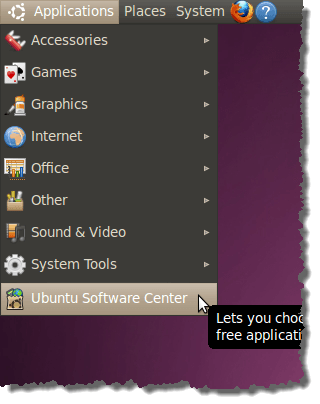
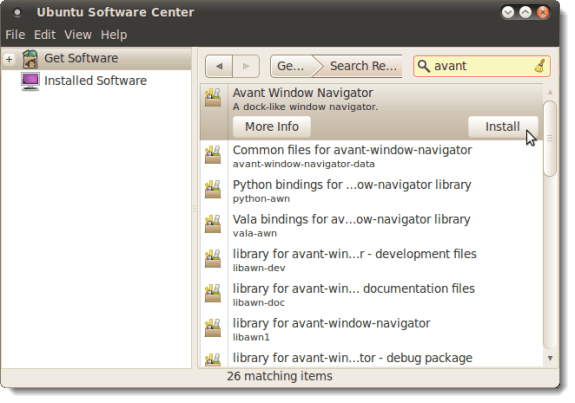
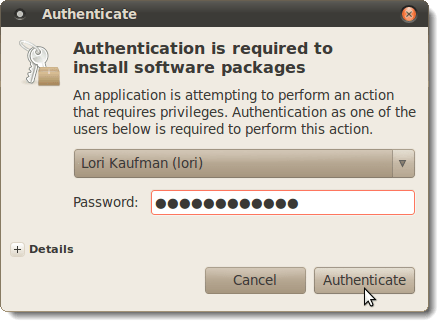
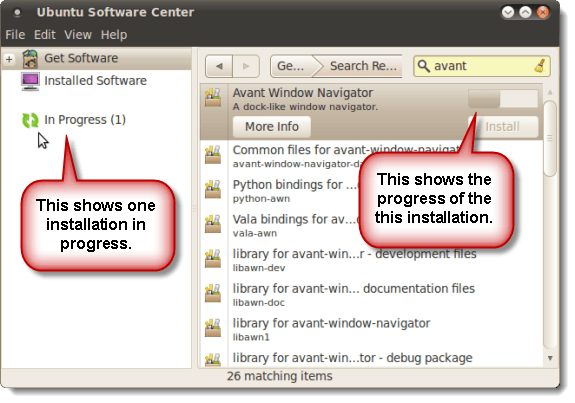
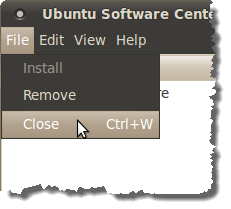
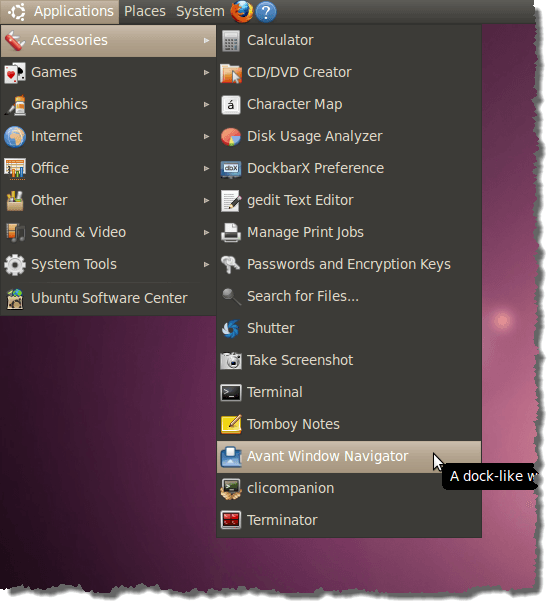
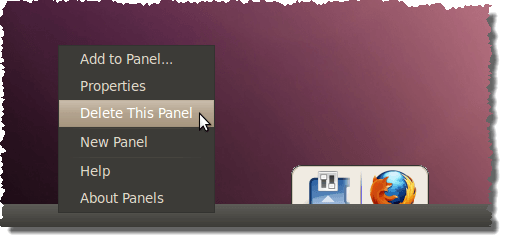
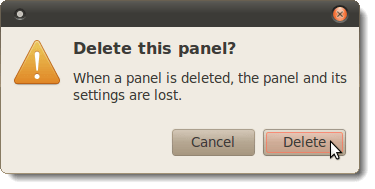


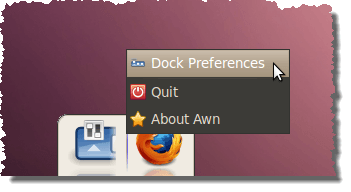
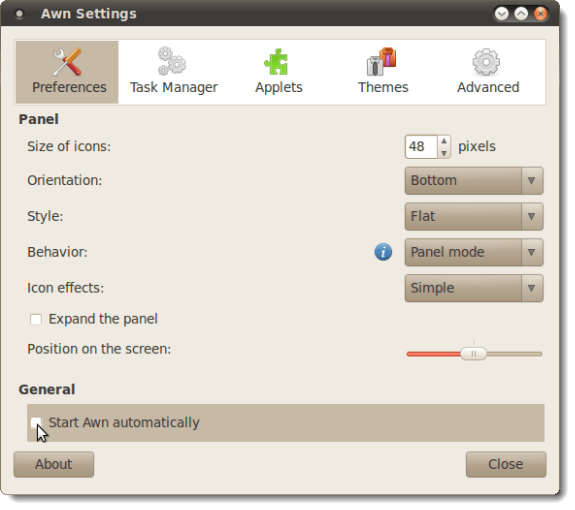

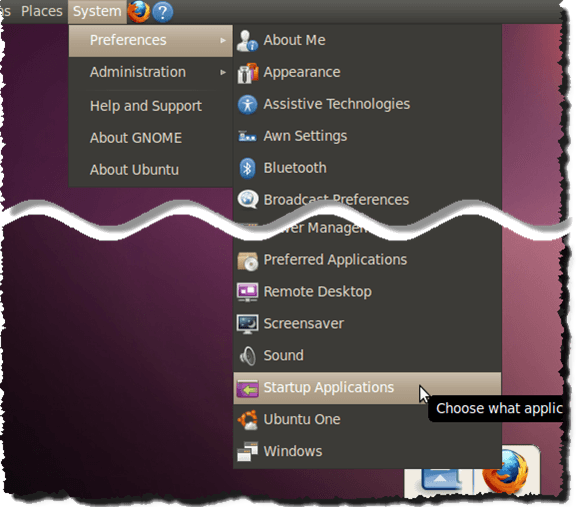
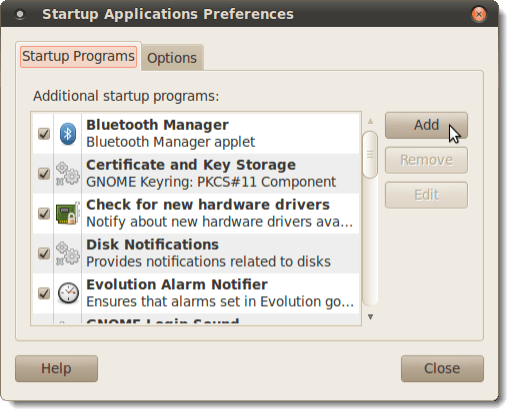
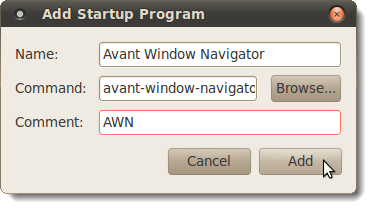

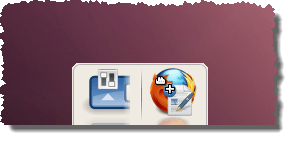
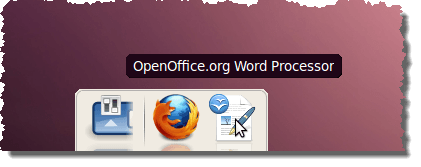
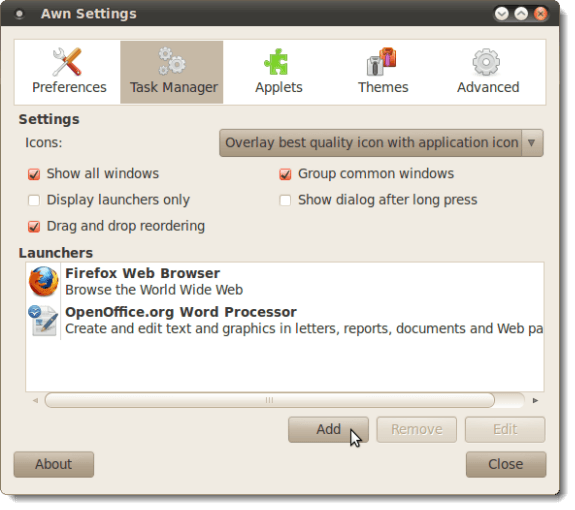

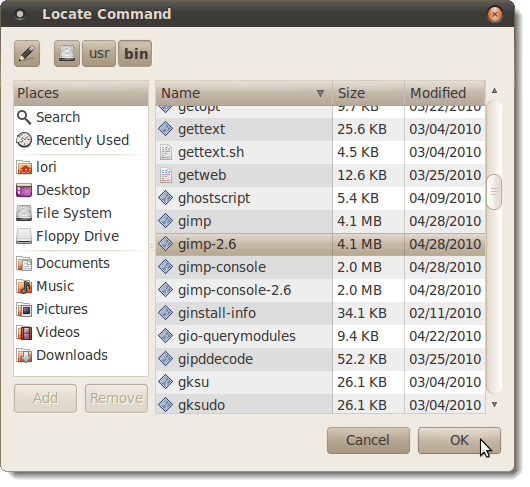
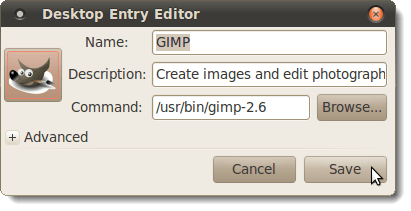
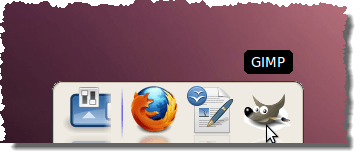
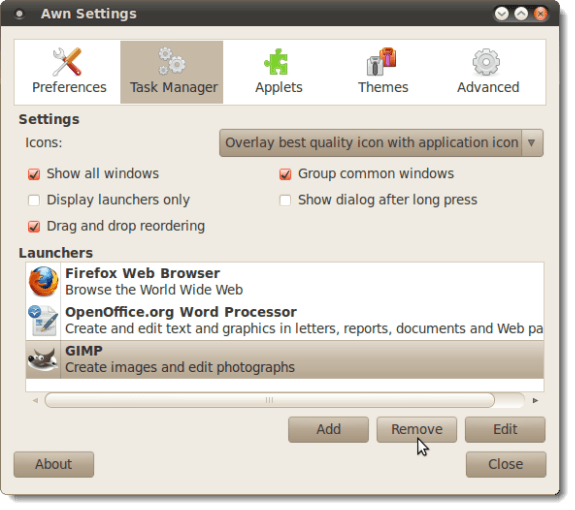
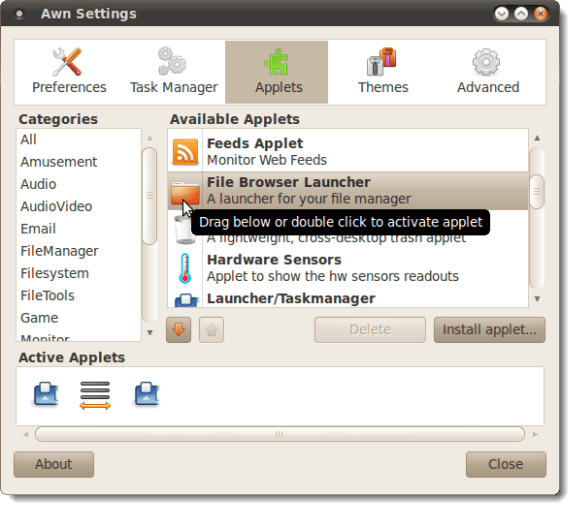


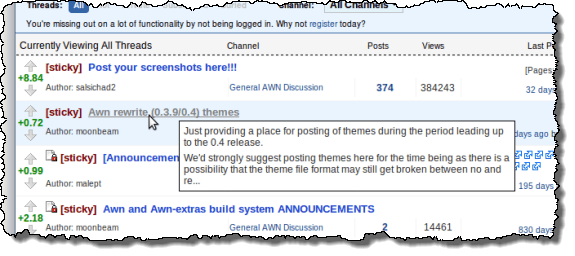
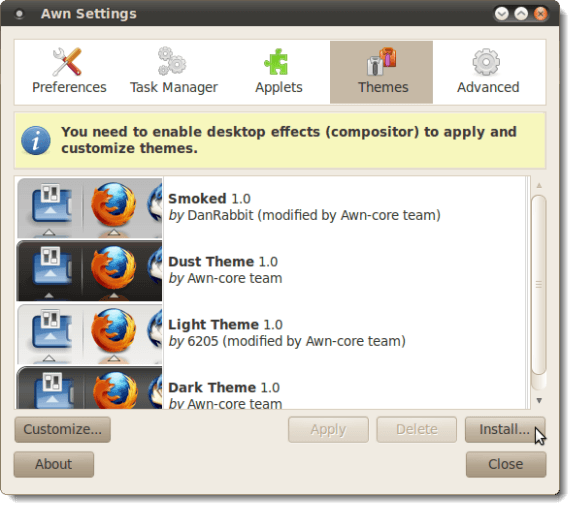
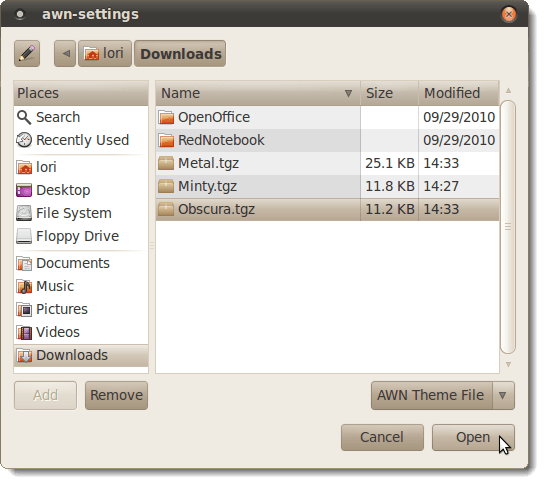
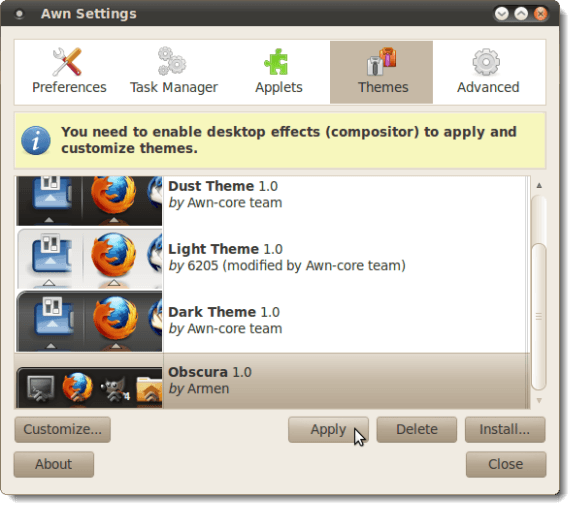


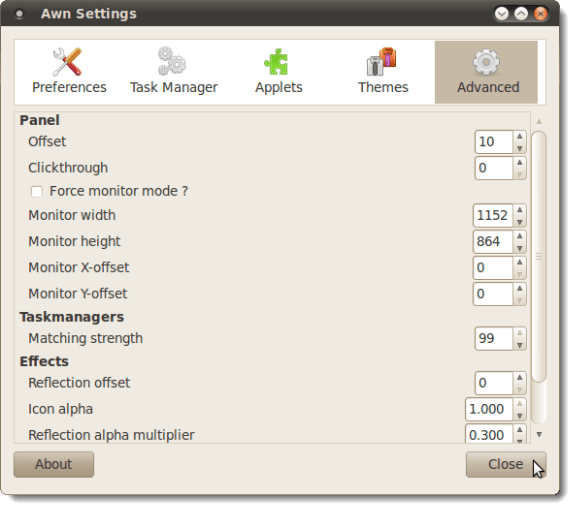
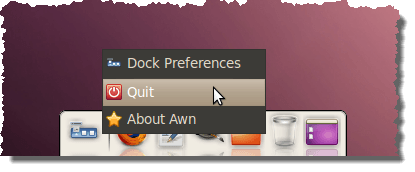
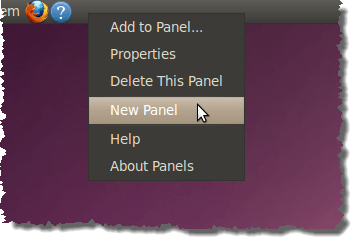

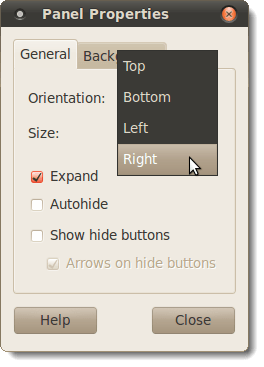
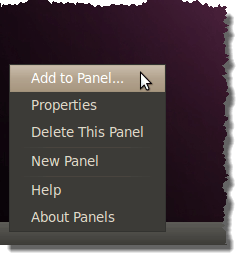
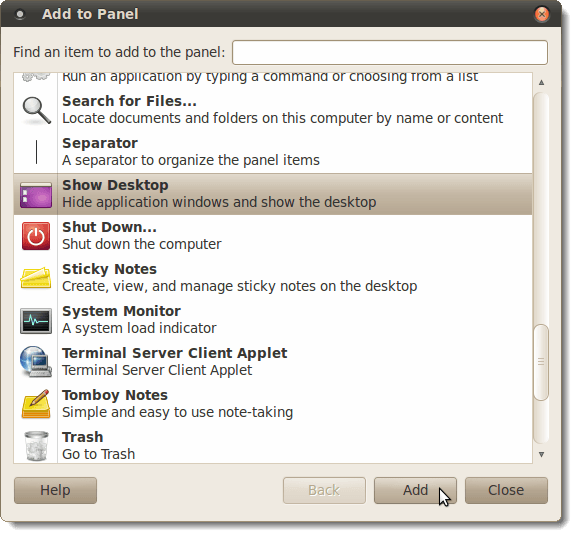
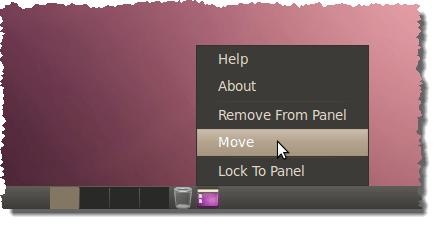
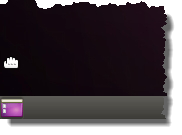
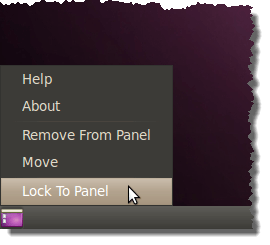
No comments:
Post a Comment